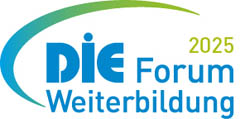The Network for Tanzanian High Learning and Research
 Dar-es-Salaam (TZS), May 2008 - Dr. Jabiri Kuwe Bakari is currently a Lecturer and Director of the Institute of Educational Technology, Open University of Tanzania. He is also the Acting Executive Secretary of TERNET, an organisation he will introduce at eLearning Africa. He will also explain TERNET's plans and strategies for facilitating eL.earning initiatives among higher learning institutions in Tanzania.
Dar-es-Salaam (TZS), May 2008 - Dr. Jabiri Kuwe Bakari is currently a Lecturer and Director of the Institute of Educational Technology, Open University of Tanzania. He is also the Acting Executive Secretary of TERNET, an organisation he will introduce at eLearning Africa. He will also explain TERNET's plans and strategies for facilitating eL.earning initiatives among higher learning institutions in Tanzania.
Would you please briefly outline the form, activities and tasks of TERNET?
Dr. Jabiri Kuwe Bakari: The Tanzania Education and Research Network (TERNET) was formally constituted in March, 2007 as an autonomous body broadly representing the Higher Learning and Research Institutions in Tanzania and later registered as a trustee in April, 2008. While the central focus of TERNET is currently on the establishment of National Research and Education Networks (NREN), its full set of objectives covers the much broader scope of facilitating and enabling sharing of ICT resources effectively to enhance the efficiency and quality of education - both contact and Open Distance Learning (ODL) and research - in Tanzania.
Which target groups benefit most from the activities of TERNET currently and which will benefit from it in the future?
Dr. Jabiri Kuwe Bakari: There are currently 54 Higher Education Institutions (HEIs) scattered around Tanzania. So far only 21 have signed a memorandum of understanding (MOU) and others are joining as times goes on. However, our plans assume that all (HEIs) will finally become members. In addition, government institutions like the Tanzania Commission of Universities (TCU) also benefits from the TERNET initiatives.
What are TERNET's goals and within which timeframe will they be reached?
Dr. Jabiri Kuwe Bakari: Looking at the objectives below, one can see that they will all have an influence on eLearning and electronic information access in Tanzania.
The first is to enhance access to information and ICT resources for students, researchers, and teachers in Tanzania, as well as high learning and research institutions. This will narrow the gap between those with adequate learning resources and those without.
The second is to create a common repository of information resources, research resources, and related educational resources that can be reached from any part of the network irrespective of the geographical location of the person accessing the information. This will be a common denominator where levels of information access will be equalized.
The third is provide easy, affordable data communication among institutions, which will encourage sharing resources, collaboration, and development of joint programmes by participating institutions nationally and regionally, particularly with other national research and education networks through the Ubuntunet Alliance.
The Alliance has been established to capitalise on the emergence of optical fibre and other terrestrial infrastructure opportunities and thus become the Research and Education Network (REN) backbone of Africa. Tertiary education and research institutions throughout the rest of the world are connected to the Internet using fast low-cost fibre. The UbuntuNet Alliance plans to link NRENs in Africa through Géant, the EU academic and research fibre network, to other academic and research fibre networks around the globe.
TERNET expects that most of these objectives will be realized in about year, when the proposed Tanzania National Communication Infrastructure backbone Network becomes operational.








